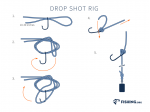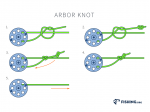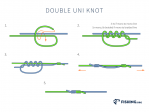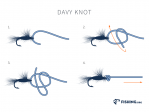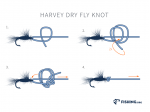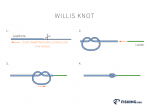Traditionally, fishermen did not have access to the complicated, very efficient fishing lines and hooks that have been made possible by the very advanced technology that has affected almost every sector of the economy. Orvis Knot is one of the inventions that enabled fishermen to successful get a good catch when they go into the water to fish for adventure or as a sport, with their friends or with families.
Orvis Knot was invented by Larry Becker in a contest that aimed at coming up with the best knot that would be used to attach the line to a hook efficiently. The Name Orvis was derived from the legendary Orvis, who was the man who held the content. Orvis owned a company at the time. The knot is truly worth the name since it is not just famed for being born out of a contest. It is widely used and has also motivated other modern designs due to its simplicity yet very reliable make. The knot is strong and has high efficiency.
Orvis Knot

The Orvis Knot
For any sport or adventure fisherman, the steps for tying Orvis Knot are as follows:
Step 1:
Feed line through fishhook eye from below and enfold it behind the standing line. Then, cross over standing line and bring the end through the first circle formed. This will create a figure eight.
Step 2:
Feed the tag end through the top part of the loop, or you can still feed it right from behind and repeat passing the rope through the loop.
Step 3:
With a picture manual guide, you will have a clear idea of how the line should look like before you tighten the knot.
Step 4:
To fasten the knot effectively, you can choose to moisten the line or alternatively choose to pull on the hook and the standing line, which makes the tag end to tighten the knot as you pull.
Our Take:
The Orvis knot is used in almost all fishing activates due to its lightweight, strength and small size. It is also commonly used because it is simple to tie. It works well in light and heavy lines. It is also efficient in any tippet material. The knot does not interfere with the line’s original breaking strain. The line’s resistance to strain remains as though the knot was not there. This is the reason modern fishing lines are using the same technique when designing new fishing lines and hooks. It can last long without getting damaged.
 Carla Arbuckle
Carla Arbuckle 

